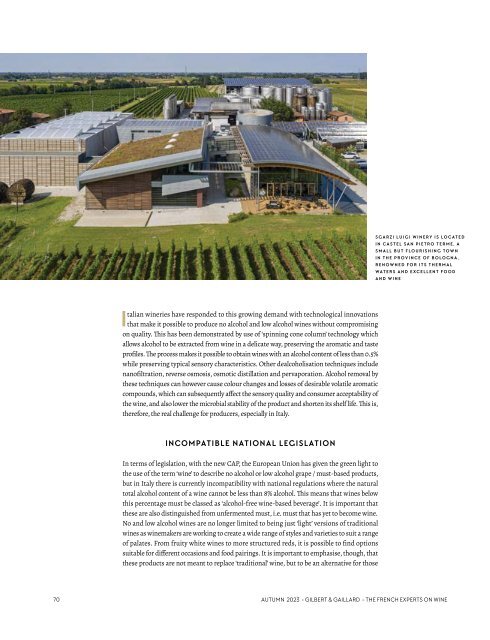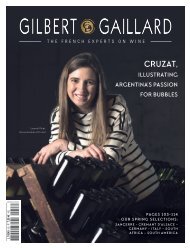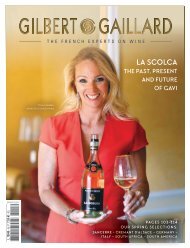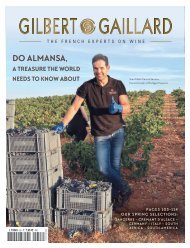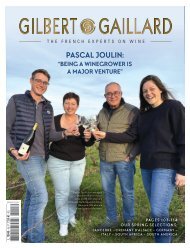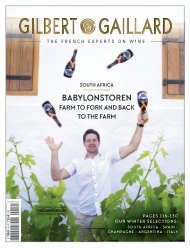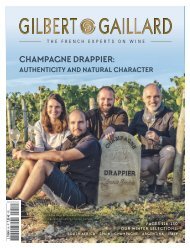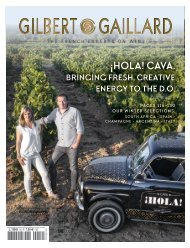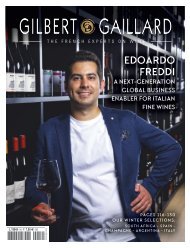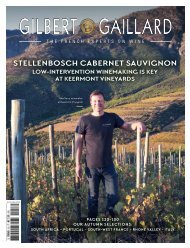You also want an ePaper? Increase the reach of your titles
YUMPU automatically turns print PDFs into web optimized ePapers that Google loves.
SGARZI LUIGI WINERY IS LOCATED<br />
IN CASTEL SAN PIETRO TERME, A<br />
SMALL BUT FLOURISHING TOWN<br />
IN THE PROVINCE OF BOLOGNA,<br />
RENOWNED FOR ITS THERMAL<br />
WATERS AND EXCELLENT FOOD<br />
AND WINE<br />
Italian wineries have responded to this growing demand with technological innovations<br />
that make it possible to produce no alcohol and low alcohol wines without compromising<br />
on quality. This has been demonstrated by use of ‘spinning cone column’ technology which<br />
allows alcohol to be extracted from wine in a delicate way, preserving the aromatic and taste<br />
profiles. The process makes it possible to obtain wines with an alcohol content of less than 0.5%<br />
while preserving typical sensory characteristics. Other dealcoholisation techniques include<br />
nanofiltration, reverse osmosis, osmotic distillation and pervaporation. Alcohol removal by<br />
these techniques can however cause colour changes and losses of desirable volatile aromatic<br />
compounds, which can subsequently affect the sensory quality and consumer acceptability of<br />
the wine, and also lower the microbial stability of the product and shorten its shelf life. This is,<br />
therefore, the real challenge for producers, especially in Italy.<br />
INCOMPATIBLE NATIONAL LEGISLATION<br />
In terms of legislation, with the new CAP, the European Union has given the green light to<br />
the use of the term ‘wine’ to describe no alcohol or low alcohol grape / must-based products,<br />
but in Italy there is currently incompatibility with national regulations where the natural<br />
total alcohol content of a wine cannot be less than 8% alcohol. This means that wines below<br />
this percentage must be classed as ‘alcohol-free wine-based beverage’. It is important that<br />
these are also distinguished from unfermented must, i.e. must that has yet to become wine.<br />
No and low alcohol wines are no longer limited to being just ‘light’ versions of traditional<br />
wines as winemakers are working to create a wide range of styles and varieties to suit a range<br />
of palates. From fruity white wines to more structured reds, it is possible to find options<br />
suitable for different occasions and food pairings. It is important to emphasise, though, that<br />
these products are not meant to replace ‘traditional’ wine, but to be an alternative for those<br />
70 AUTUMN 2023 • GILBERT & GAILLARD - THE FRENCH EXPERTS ON WINE


